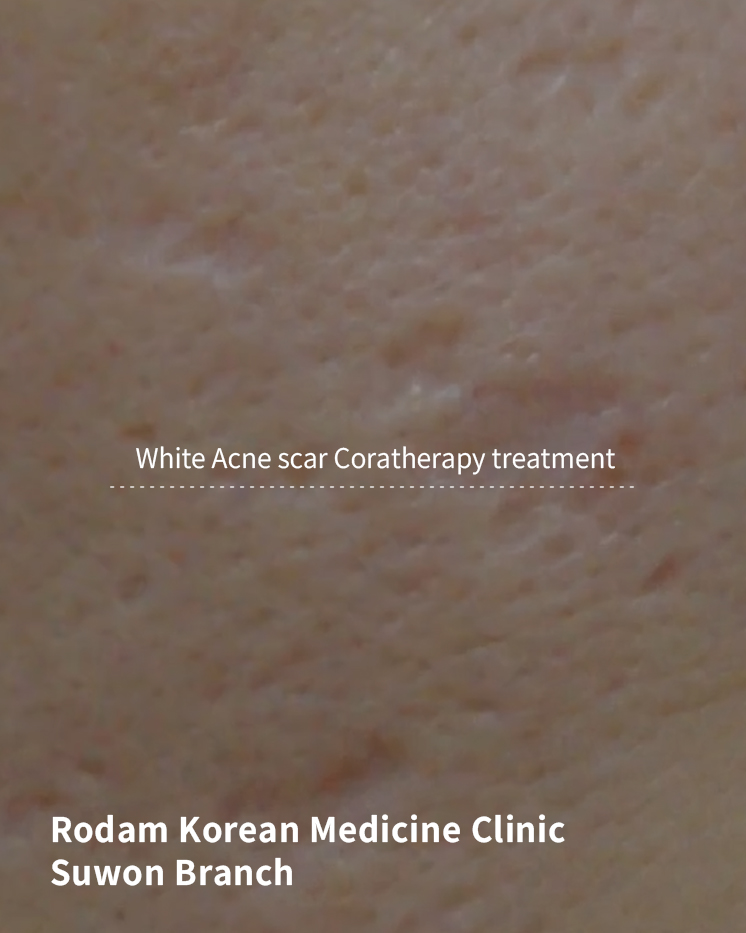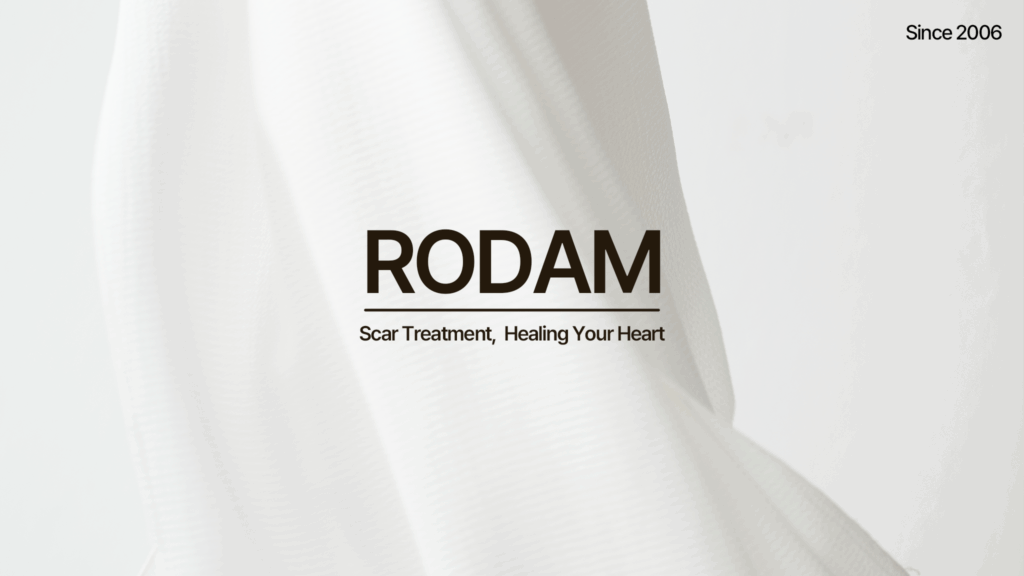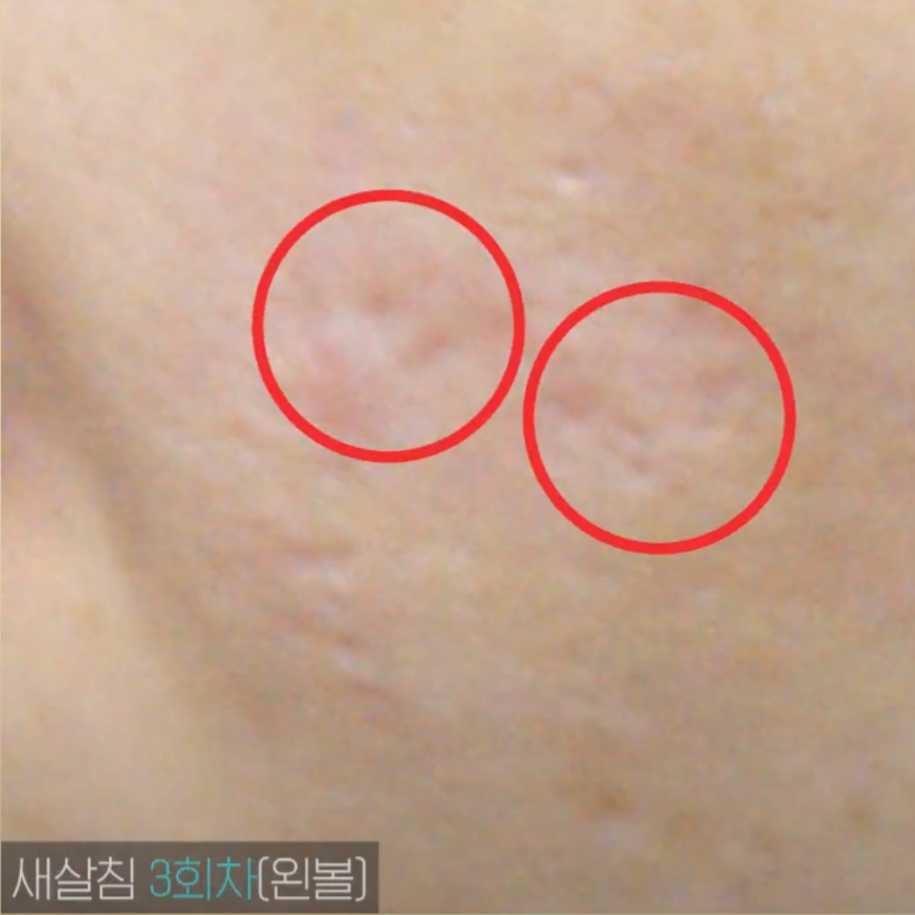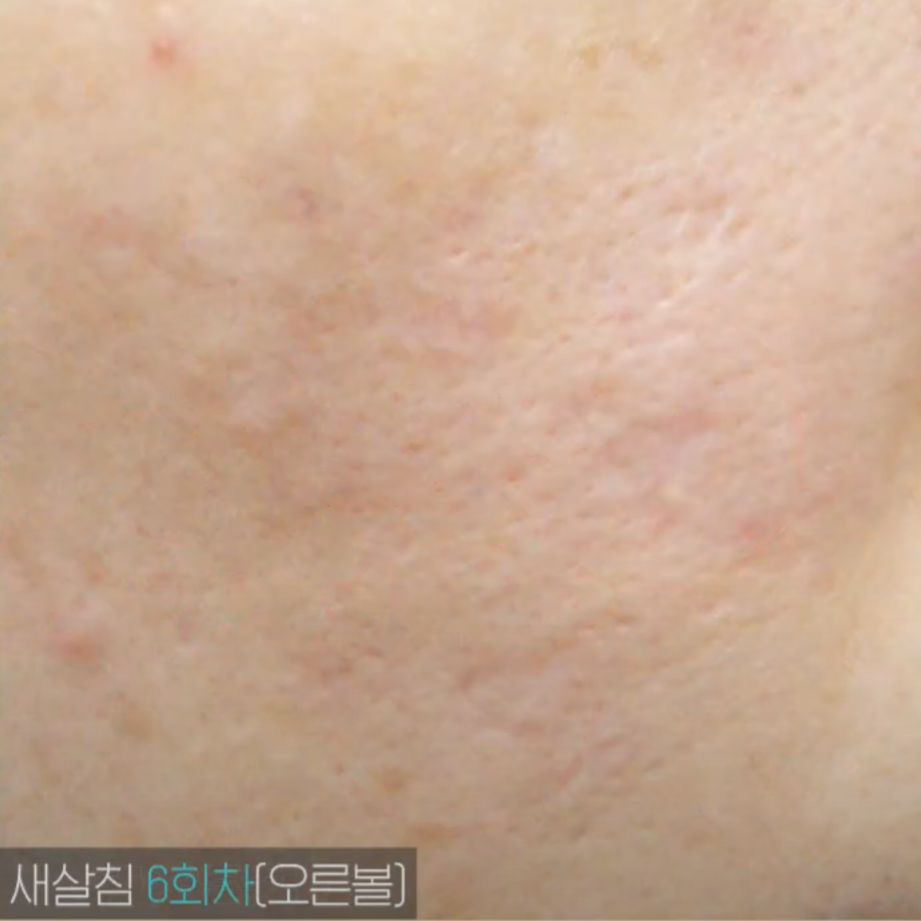
White acne scars after treatment with Coratherapy at a Korean Medicine Clinic.

Hello, this is Dr. Sangyeob Lee from Rodam Korean Medicine Clinic, Suwon branch, specializing in removing scars.
Today, I would like to introduce a case of acne scars in an adult female, which is not typical but rather unique in shape.
In general, acne scars are usually less than 5mm in width and are characterized by a large number of scars.
This case, however, is a bit special.
The scars are relatively large, and upon closer inspection, you can see the whitish fibrotic nature of the skin within the scars.
Such scars occur when inflammatory acne repeatedly progresses.
Additionally, typical acne scars can be observed around the area.

Case :: Female acne scars, unusually large scar size.
History :: Had undergone numerous laser treatments but felt the condition worsened, leading to discontinuation. Chose Coratherapy as the final treatment option.
Detail :: Uncommon type of acne scars where scars merged to form larger ones. Frequent laser treatments weakened the edges, but fibrosis caused whitish discoloration.
On both the left and right sides, there are distinct large scars with fibrosis, surrounded by typical acne scars.
The patient mentioned having undergone various laser treatments, the last one being about two years ago.
However, there were no noticeable effects, and the scars seemed to worsen, leading to discontinuation and giving up on treatment.
Then, the patient learned about Coratherapy and visited us with renewed hope.
The typical acne scars around the area were expected to be treated easily.
However, for the large scars with advanced fibrosis, it was predicted that the internal adhesions would be severe, potentially requiring a longer treatment period.
This was explained to the patient before starting the treatment.


Coratherapy treatment after 3 sessions (left cheek)
This is after the third session.
The depth of the fibrotic scars, which were clearly visible, has significantly reduced.
The difference in skin texture is also much less noticeable.
Both the left and right sides show similar results.
The patient mentioned being amazed as the sunken feeling when touching the skin had disappeared.
Overall, the skin texture still appears slightly uneven.
This is due to the remaining depressed areas, which will disappear after completing the remaining sessions.
It was a situation where we could confidently predict good results.


Coratherapy treatment after 6 sessions (right cheek)
This is a photo taken one month after the sixth session.
Looking at the right side first, the typical acne scars mentioned earlier have almost completely resolved.
The large fibrotic scars have been treated to the point where only slight traces remain.
The left side also shows similar results, where scars are barely noticeable without comparing to the pre-treatment photos.
The existing ice pick scars around the nasolabial folds and under the eyes have also shown rapid improvement and have nearly disappeared.
According to the patient, makeup no longer needs to be applied heavily as the scars are no longer visible.
This allowed us to conclude the treatment on a positive note.

Fibrotic scars usually have severe internal adhesions, so the treatment period is generally set generously.
However, in cases where the skin’s regenerative ability is excellent, rapid progress can be observed.
Even if the treatment takes longer, the results are promising, so there’s no need to worry too much about the duration.
I hope this case has helped you better understand various acne scar treatments.
I also hope today’s post has eased some concerns about acne scars.
For more detailed before-and-after photos, please visit the ‘Rodam Korean Medicine Clinic’ YouTube channel.


